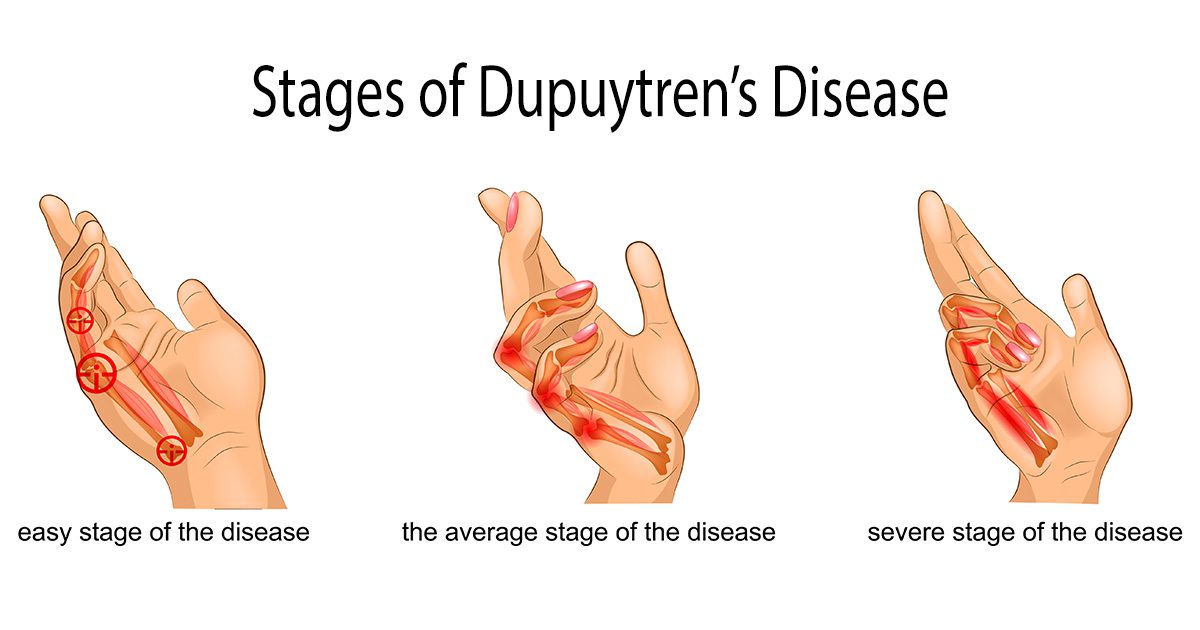What is Dupuytren's Disease?
What causes Dupuytren’s Disease?
The cause of Dupuytren’s disease is unknown; however, important factors include genetics, ethnicity, sex, and age and may include certain environmental factors and other diseases. It is more common in men over age 40 and people of northern European descent. The nodules can be uncomfortable in some people, but Dupuytren’s contracture is not typically painful.
The disease is often first noticed by the thickened nodules, but this does not usually affect function. The severity of disease and its progression is variable. Some people will have only small lumps or cords, while others will develop a severely bent finger. It is difficult to predict how the disease will progress. Most times progression is noted by the inability to lay the hand flat on a table. As the fingers draw into the palm, it may be more difficult to wear gloves, shake hands, and get hands into pockets.
How Is Dupuytren’s Disease Diagnosed?

How Are Dupuytren’s Contractures Treated?
Steroid injections
This treatment helps the sufferer deal with inflammation and the pain that comes with it.
Enzyme injections
Enzyme injections into the taut cord in your palm can soften and weaken the tissue. This gives the doctor an opportunity to break-up the cord and return the fingers to a more natural position.
Needle aponeurotomy
In this technique, the objective is to break-up the affected cord of tissue with a needle. It’s a simple procedure that can be performed in the doctor’s office. However, it may not be an appropriate option for tissue close to certain nerves or tendons.
Surgery
Patients with advanced Duputren’s contractures may require surgery to remove all tissue susceptible to Dupuytren's contracture, including the skin. This option lasts longer than needling or enzyme injections. However, it is the most invasive option, may require a skin graft, and intensive physical therapy as part of the recovery.
